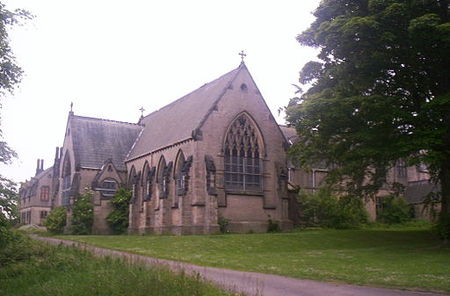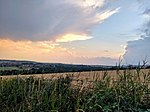Ushaw College

Ushaw College (formally St Cuthbert's College, Ushaw) is a former Catholic seminary near the village of Ushaw Moor, County Durham, England, which is now a heritage and cultural tourist attraction. The college is known for its Georgian and Victorian Gothic architecture and listed nineteenth-century chapels. The college now hosts a programme of art exhibitions, music and theatre events, alongside tearooms and a café. It was founded in 1808 by scholars from the English College, Douai, who had fled France after the French Revolution. Ushaw College was affiliated with Durham University from 1968 and was the principal Roman Catholic seminary for the training of Catholic priests in the north of England. In 2011, the seminary closed, due to the shortage of vocations. It reopened as a visitor attraction, marketed as Ushaw: Historic House, Chapels & Gardens in late 2014 and, as of 2019, receives around 50,000 visitors a year. The County Durham Music Service and Durham University Centre for Evaluation and Monitoring are based at the college and buildings at the college are also used by Durham University Business School.
Excerpt from the Wikipedia article Ushaw College (License: CC BY-SA 3.0, Authors, Images).Ushaw College
College Road,
Geographical coordinates (GPS) Address Website Nearby Places Show on map
Geographical coordinates (GPS)
| Latitude | Longitude |
|---|---|
| N 54.78818 ° | E -1.66116 ° |
Address
Ushaw Historic House, Chapels & Gardens
College Road
DH7 9RH
England, United Kingdom
Open on Google Maps




